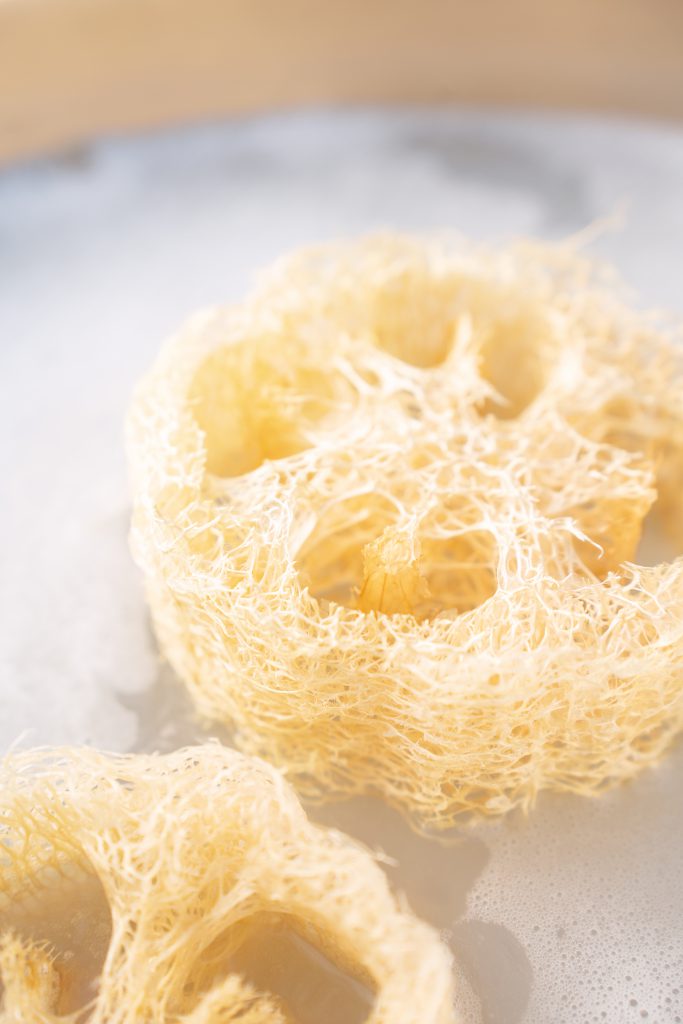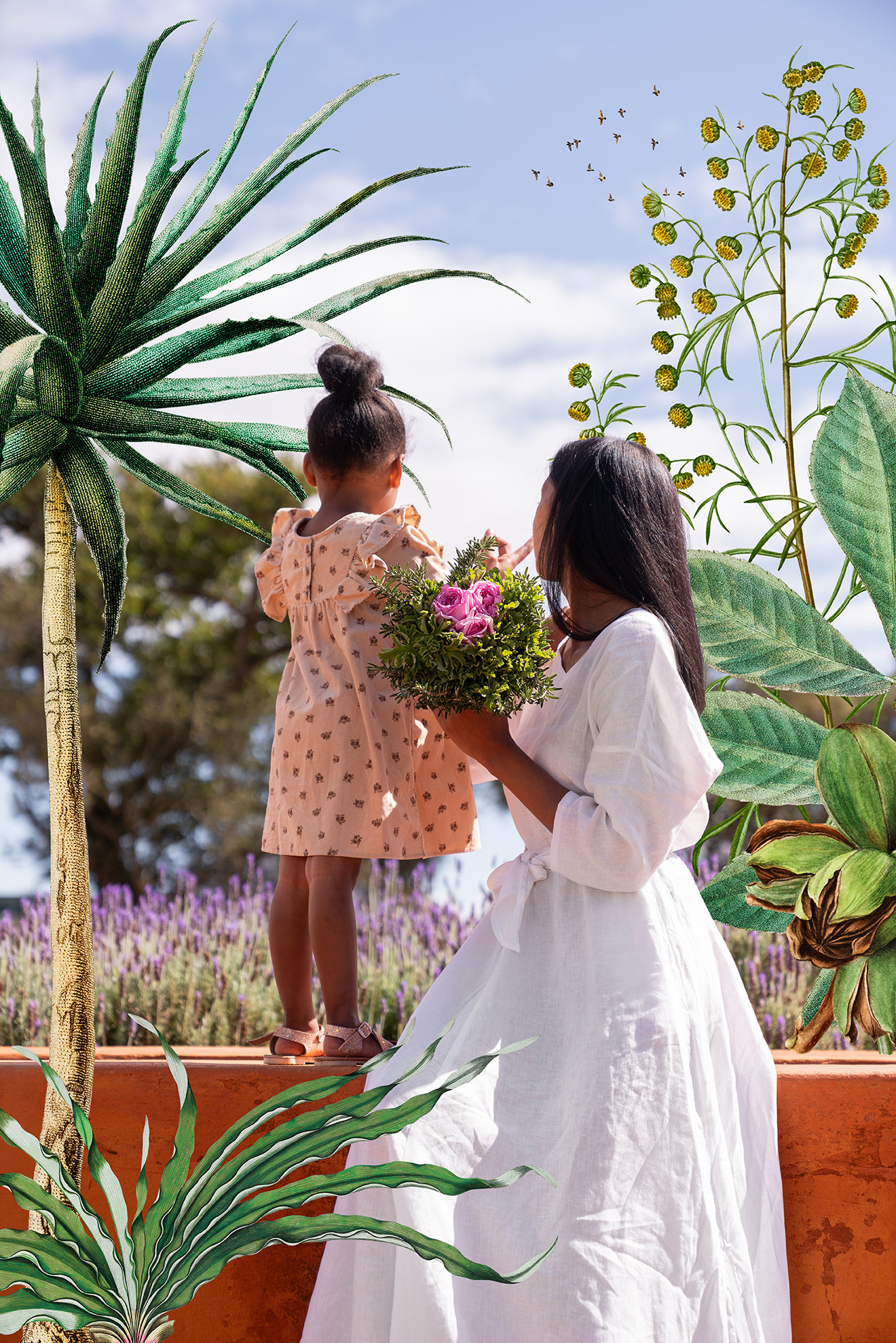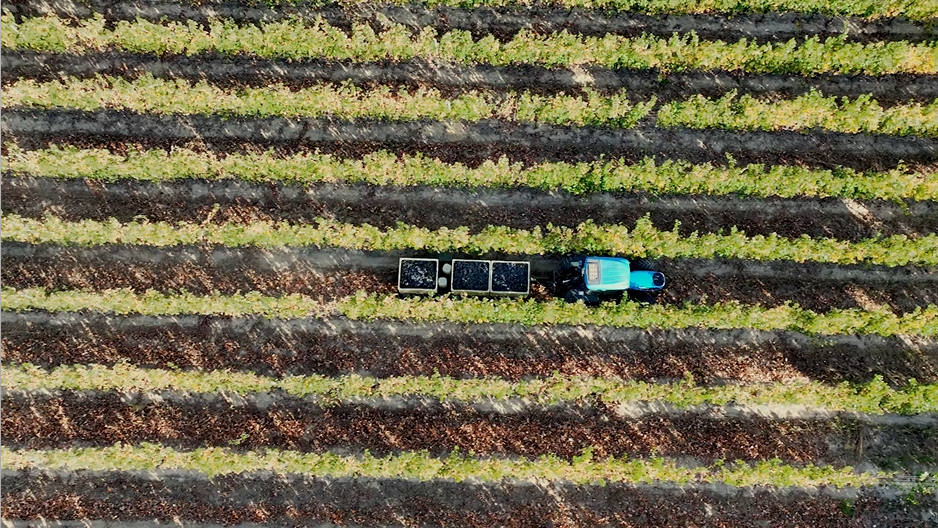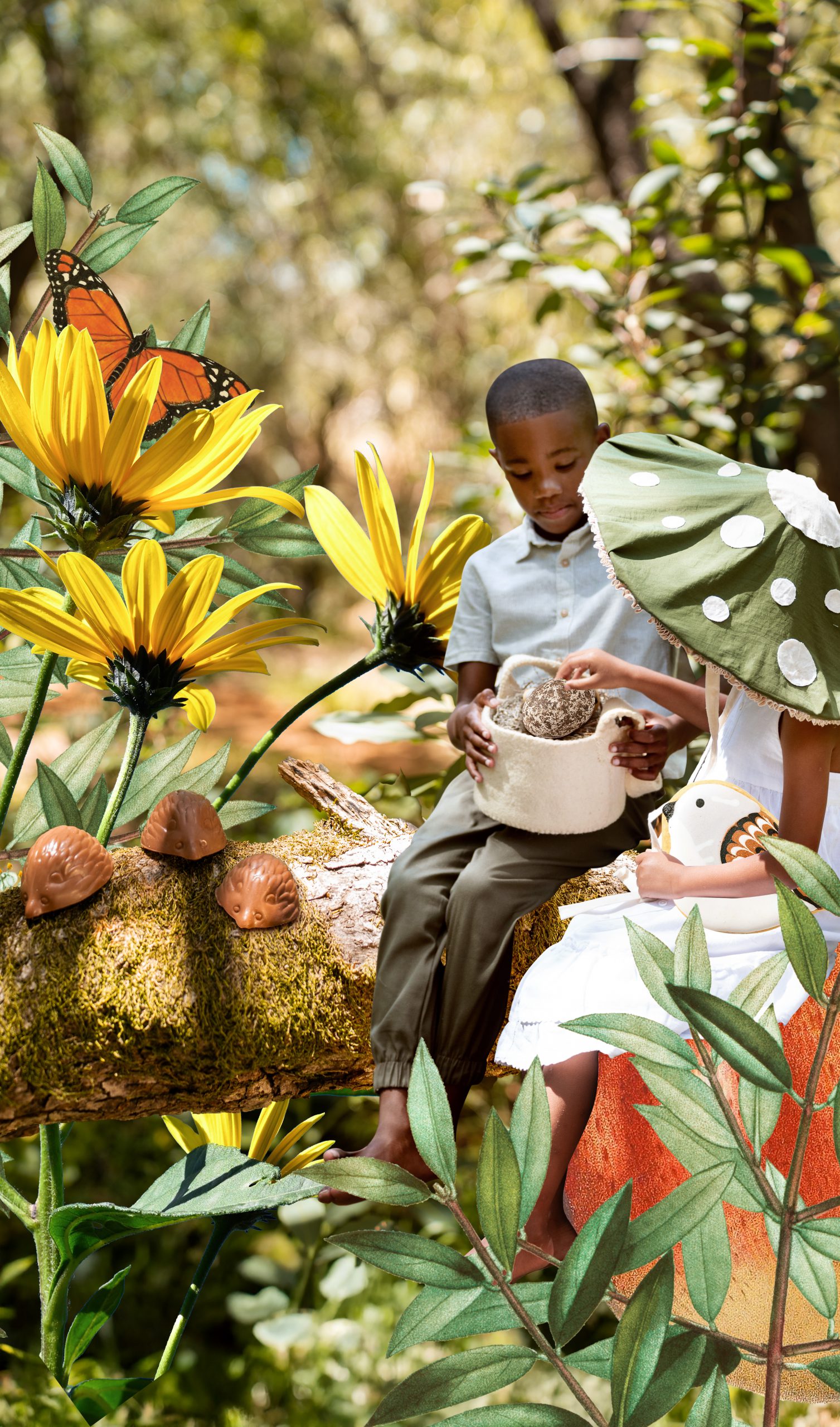For the Love of Loofahs
April 23rd, 2024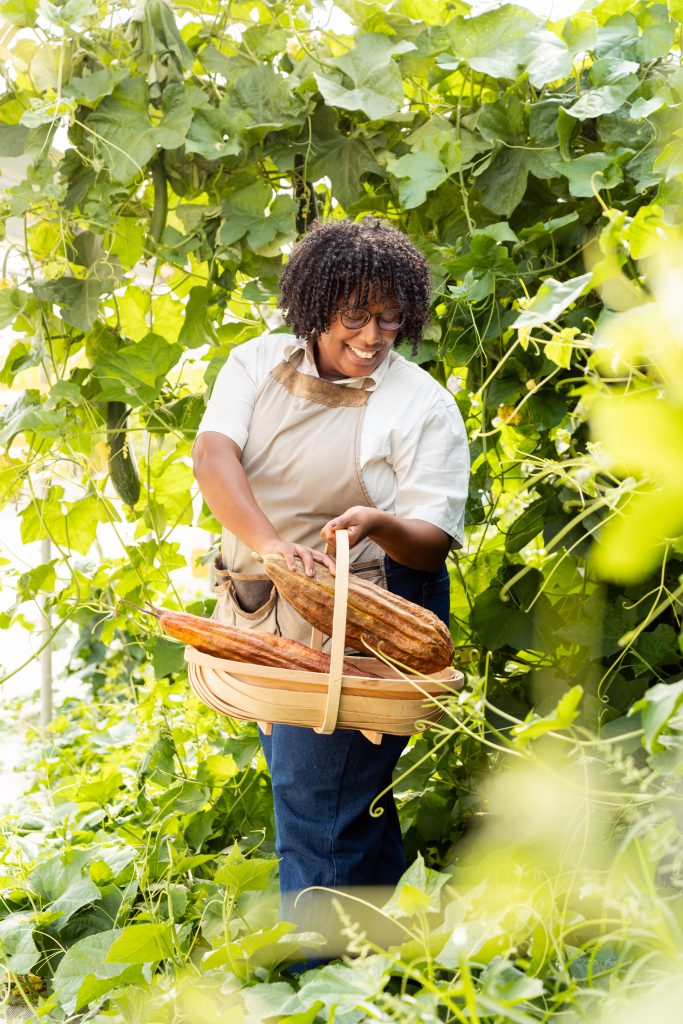
They’re squishy, luxurious and great for stimulating skin cell renewal. Nature’s very own exfoliating buff. A plant-powered pamper grown on the farm and a must-have in every kitchen and bathroom. And the best part? These spa-worthy scrubbers are farm-grown from seed and 100% compostable.
We’re in love with loofahs! And this year, we’re harvesting our very first crop on Babylonstoren.
Grown from the sponge gourd plant (Luffa aegyptiaca), these quirky cucumbers take sustainable self-care to the next level – literally. The gourds are vigorous growers that ramble up to the top of Babylonstoren’s tunnels and bear abundant fruit. Unlike traditional cucurbits, however, these are best enjoyed way past peak ripeness, when the fruits have dried up entirely.
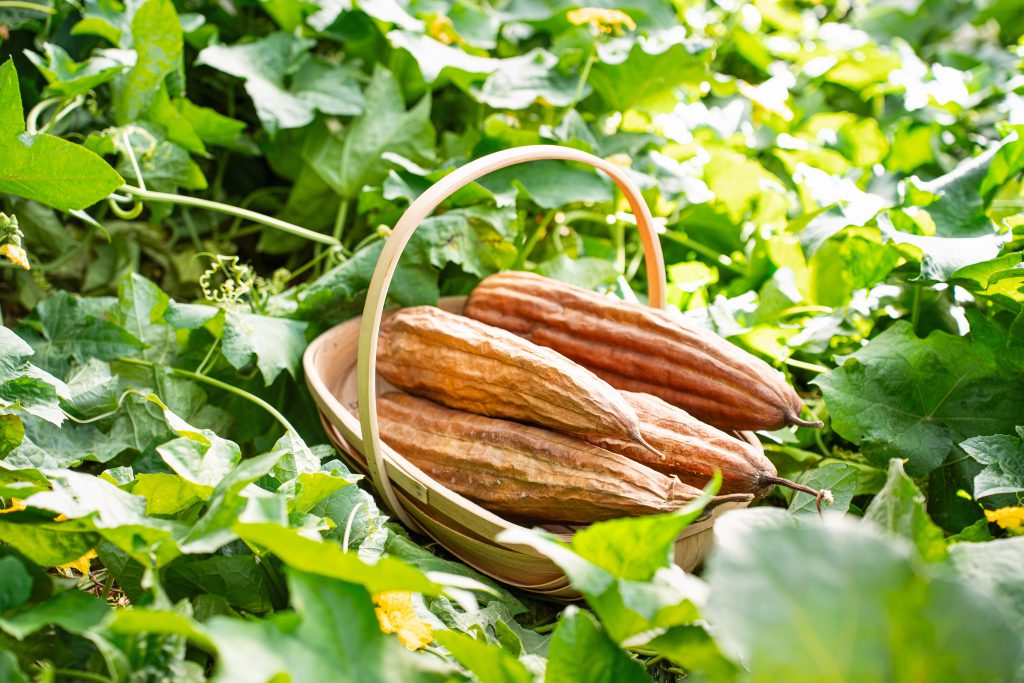
They’re grown by our tunnel expert Elzé Bresler and her team.
“The plants thrive at Babylonstoren,” she says. “Unlike many other cucurbits, loofahs are naturally pest-resistant, so we don’t have any problems with mildew. They’re beautiful to boot, with massive, bright yellow flowers.
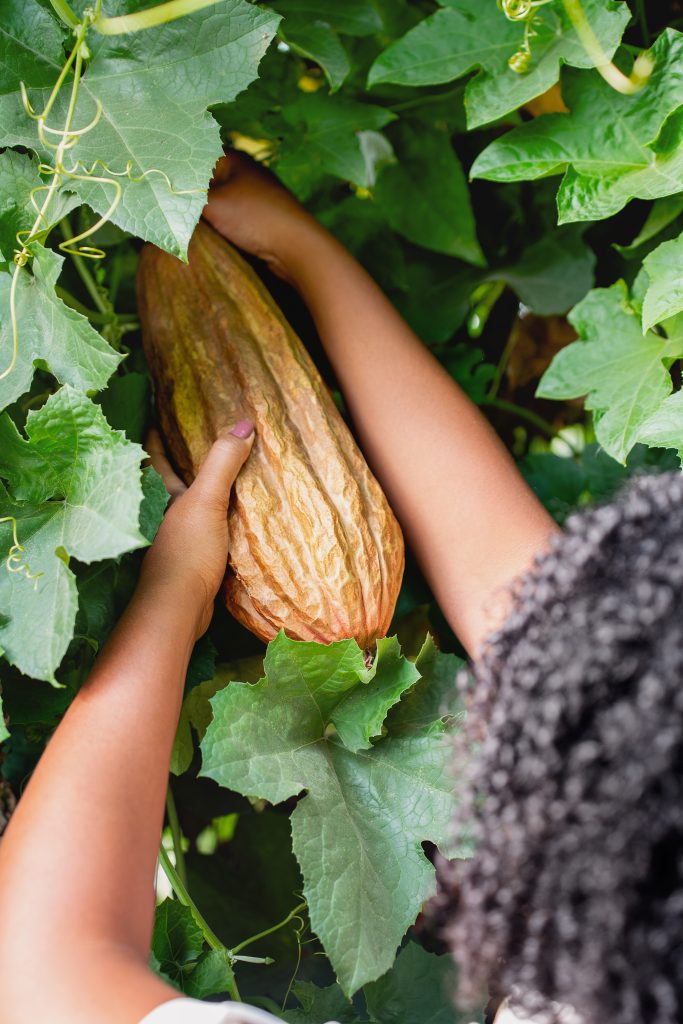
“We dry the gourds on the vine, which takes up a lot of space and time. But it’s worth it as we get to harvest something quite different and unique at Babylonstoren.”
The first loofah crop was planted in October last year already, and fruits are now finally ready to be picked and peeled. Elzé and fellow loofah lover Donelle Adams have trailed the best ways to ensure lather-ready loofahs.
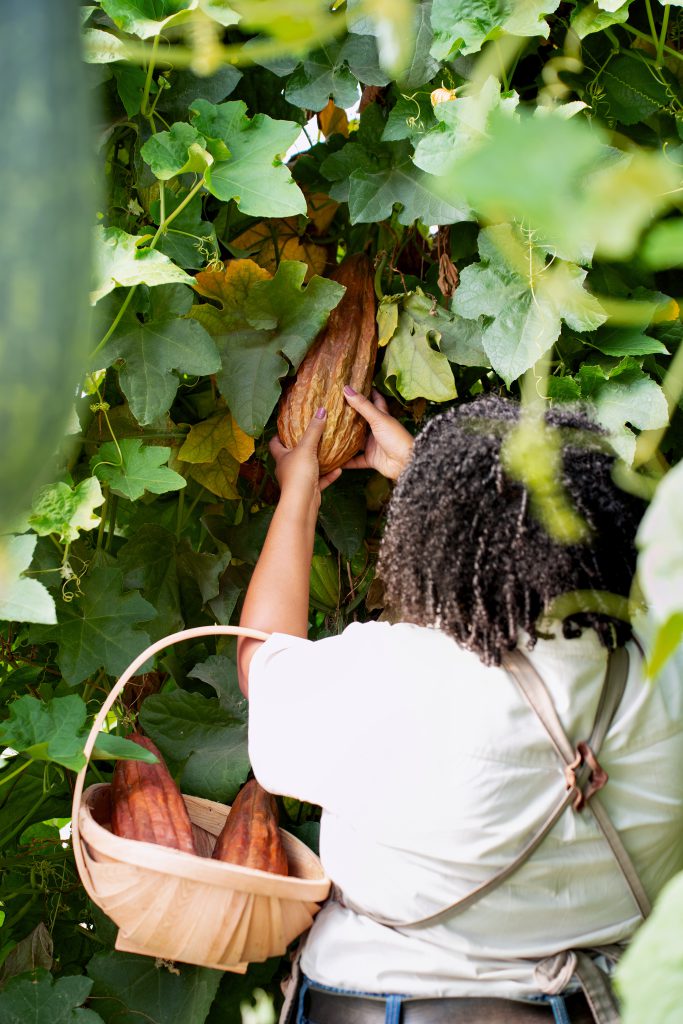
How and when to harvest loofahs
- Loofahs are ready for picking when the seeds on the inside are loose when shaken, and all the milky liquid has tried up inside. Squeeze it gently; the inside must give slightly beneath the leathered, brown peel. Then, it’s ready.
- Break off the head of the loofah. This oddly shaped bit makes for a great kitchen sponge that works wonders for scrubbing away dirt.
- Shake out all the seeds. Preserve these to sow in the coming seasons to make more loofahs!
- Make incisions all along the sides of the loofah and then peel the brown skin, like you would a banana. Make sure to remove all the skin.
- Once peeled, your loofah is ready to cut and use.
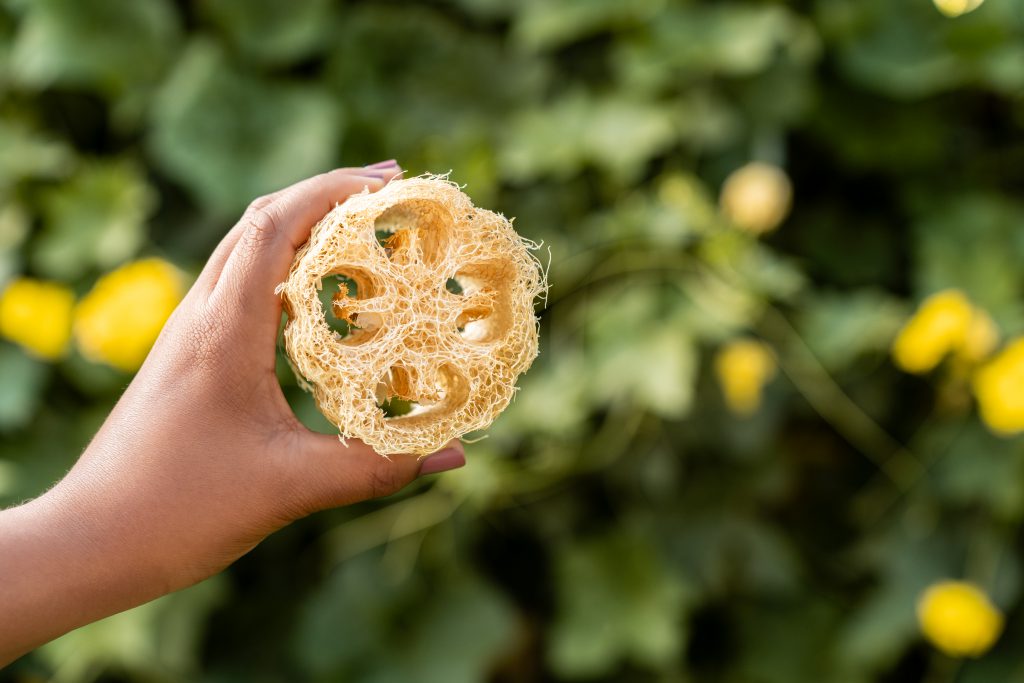
How to use a loofah
If used correctly, your loofah will offer at least three months of scrubbing pleasure before it needs replacing.
- Firstly, cut your loofah to size. The smaller bits of the gourd are great for use in the kitchen while the thicker part is good for cutting into palm-size buffs to use in the shower.
- Once in contact with water, the tough fibres of the dried gourd will soften and shrink slightly.
- Although the sponge feels tough when dry, it softens when wet to create the ultimate lathering instrument.
- Allow your loofah to dry entirely after each use. Rinse it thoroughly and allow to air in a well-ventilated area to prevent mould and bacteria growth. Tie a piece of cotton twine to it so you can hang it up to dry, or leave it on your drying rack in the kitchen.
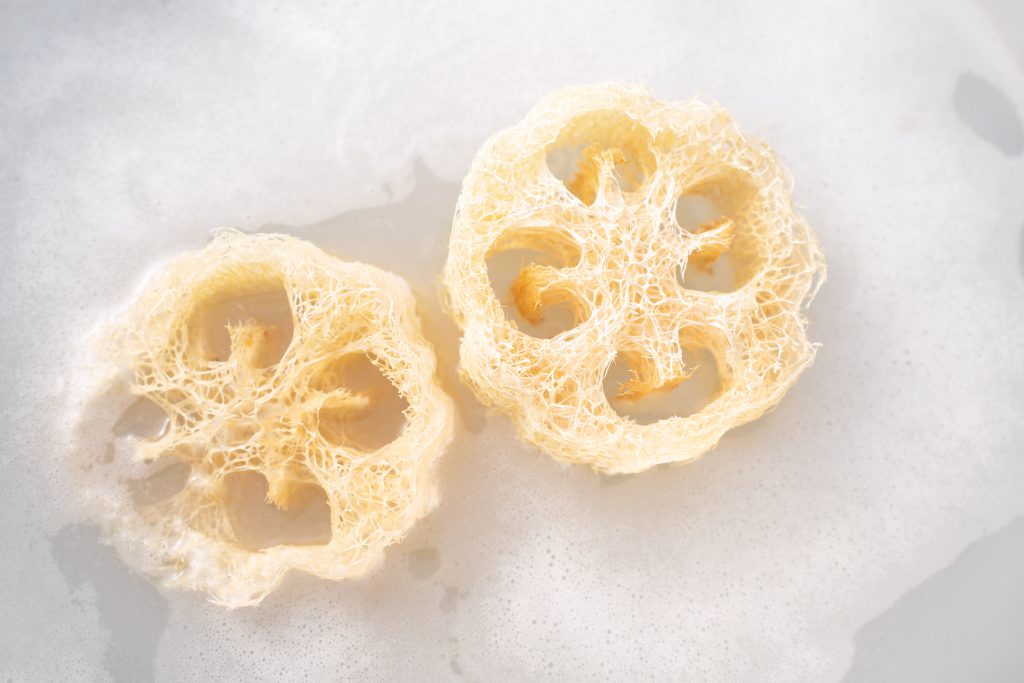
PRO TIP: Our farm-grown loofahs pair well with Babylonstoren’s very own farm-made olive oil soap. Each Bastille-style bar is handmade and cast in the farm’s Scented Room, using the cold-pressed olive oil lees from our own harvest. In-house compounder Gavin Hendricks ensures that each bar contains a minimum of 70% olive oil, alongside an infusion of only natural botanicals and other elements (such as rooibos, honey and charcoal). The result is a deeply nourishing soap with a rich lather, gentle enough for the whole family.
The loofah afterlife
It’s possible to sanitise your loofah by soaking it in a solution of water and vinegar or popping it in the dishwasher for a thorough cleanse.
However, these eco-scrubbers are also 100% compostable, so you can simply pop yours in a Bokashi bin or straight onto the compost heap.
